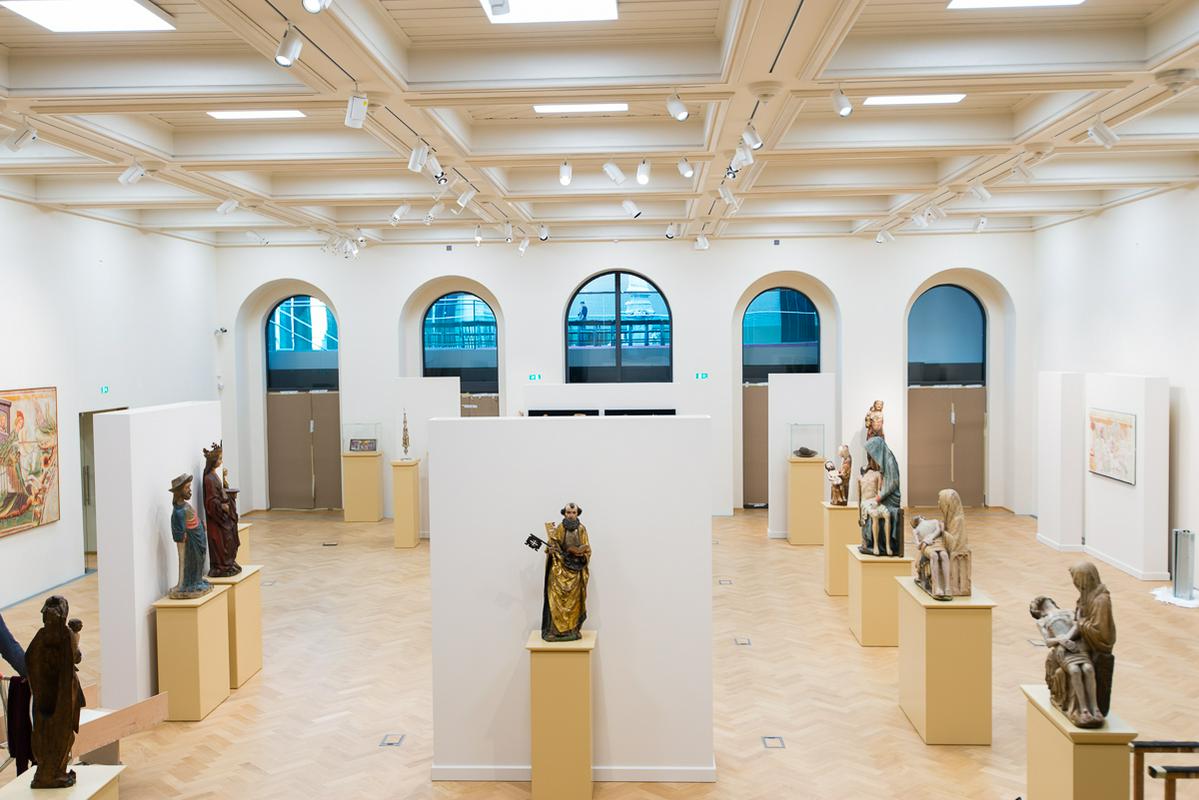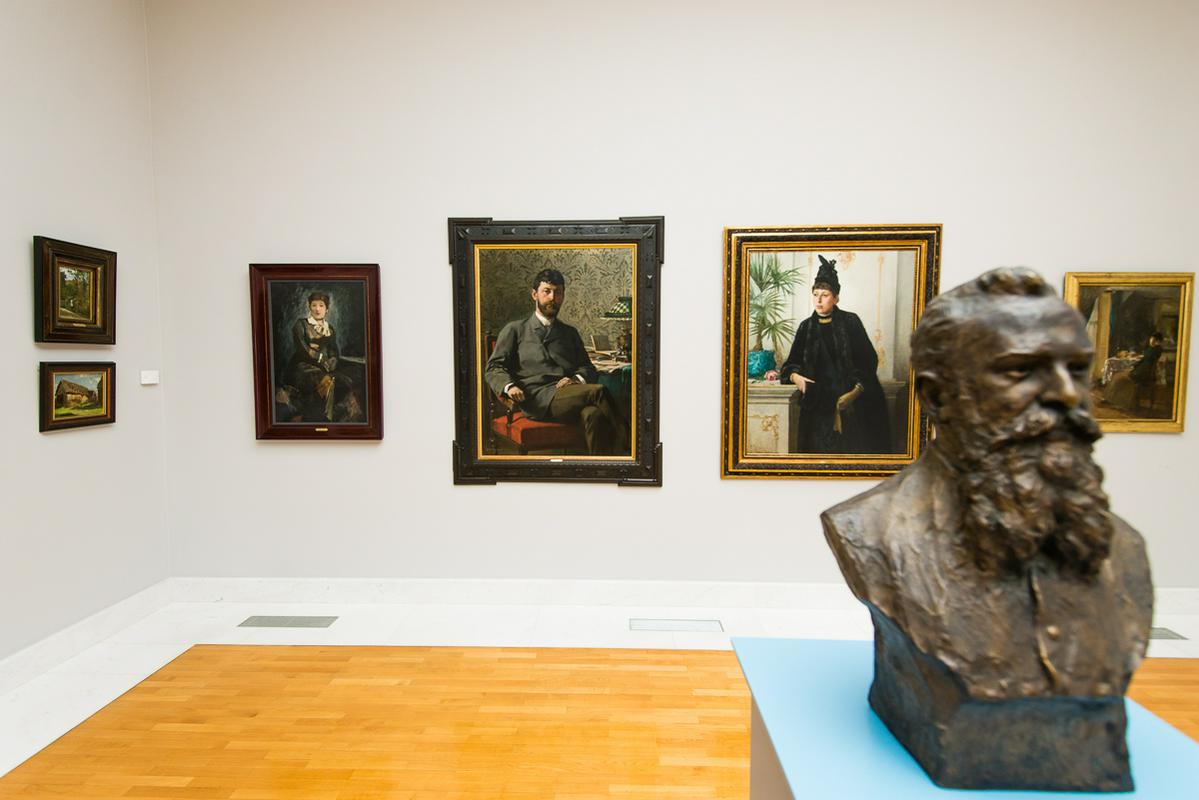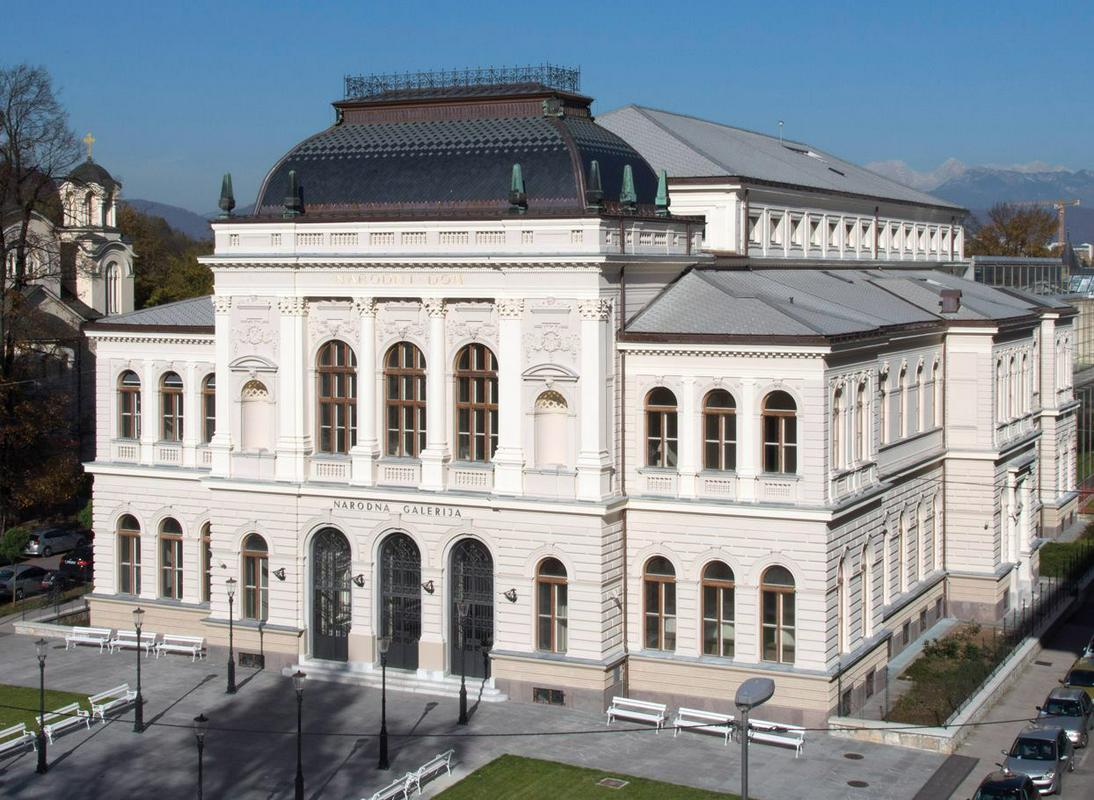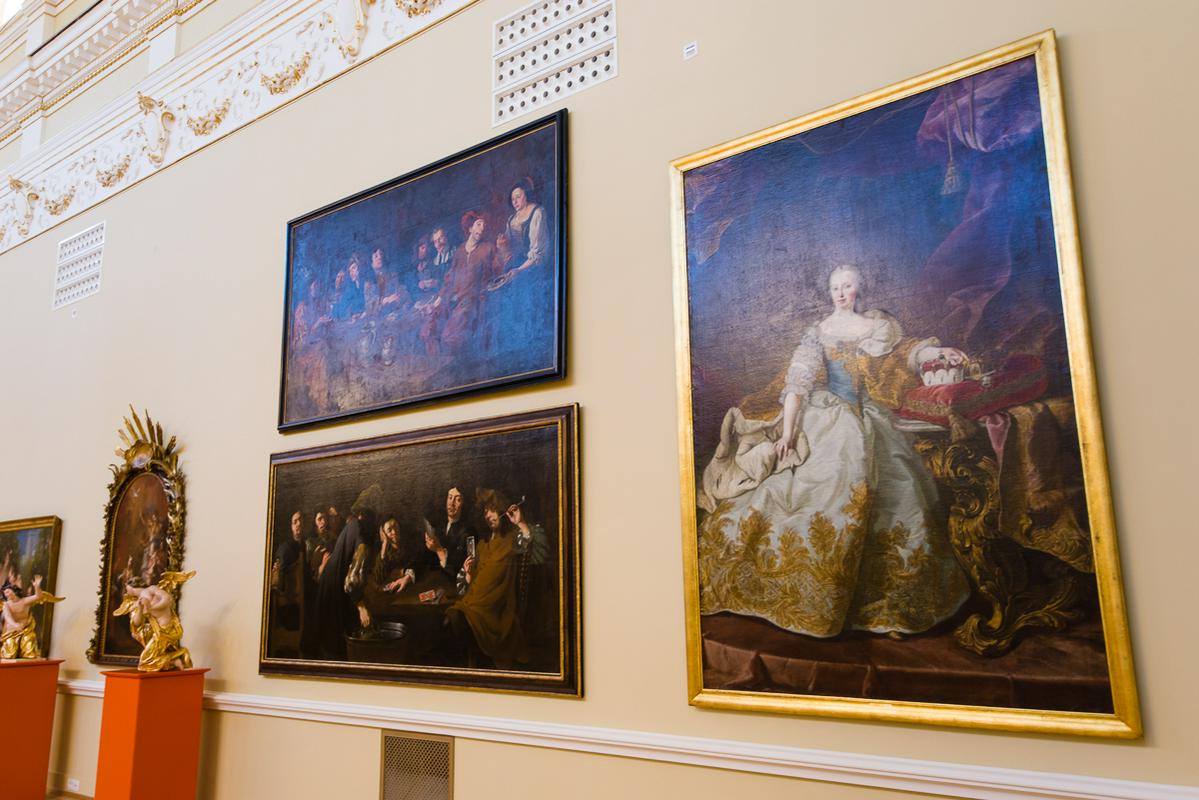






the Narodni dom building, the entrance hall and the new wing designed by architect Edvard Ravnikar. An additional 2,200m2 is available for art exhibitions. Visitors to the gallery can enjoy more art, as the existing permanent exhibition is being extended and made more lavish.
The National Gallery started to keep an inventory ledger before World War II. Paintings by European artists were either purchased or obtained on loan, or as bequests and gifts. After World War II, the gallery received some paintings from the closed down Federal Collection Centre and state institutions. The permanent art collection at the National Gallery constituted an amalgam of two collections: works by Slovenian artists and a permanent collection of European painters from different European art schools. Works created in the territory of Slovenia between the 13th and the first quarter of the 20th century include paintings and sculptures from Gothicism, Baroque, Classicism, Romanticism, Realism and Impressionism.
The new permanent collection, including works from the high Medieval period to the mid-20th century, initially consisting of 409 pieces of art has now been supplemented and includes a total of 587 exhibits. Decisions as to what to include in the collection were made on the basis of the existing stock, artistic quality and available space. The renovation enabled the utilisation of all available space in the building for the needs of the gallery, since the Narodni Dom Sports Association previously also occupied part of the building. The need for expansion related both to the demands of stock capacity and the lack of exhibition space for the establishment of permanent and special collections and stock. With renovation, there are also more possibilities for the preservation of cultural heritage. The permanent collection of Slovenian art has been extended, and there is also more space for occasional showings. A private collection, a bequest to the National Gallery, will also have its own area.
The objective of the gallery is to popularise artistic heritage. Various methods for the effective presentation, understanding and experience of fine arts are being developed within the department of education and animation. Many leisure activities are also organised, where it is possible to participate in creative workshops. In 2001, the Gal’s Club was established for children aged 6 to 14.
The National Gallery, the foremost gallery of Slovenian fine arts, was built in 1896.
The gallery became fully operational in 1928 at the premises of the Narodni dom building. Before that year, art was also displayed at the KresijaPalace, which together with the PhilipMansion marks the entrance to the old town centre of Ljubljana. The Narodni dom (National Hall) was the basis for the establishment of other institutions: the Slovenian Academy of Sciences and Arts, the Republic Institute for Monument Conservation and Protection (today, the Institute for the Protection of the Cultural Heritage of Slovenia), the Restoration Centre, the Academy of Fine Arts (today, the Academy of Fine Arts and Design) and the Modern Gallery.
The Narodni dom building was designed by the Czech architect František Edmund Škabrout and built in 1896 on the model of the National Theatre in Prague. The Narodni dom building was initially home to various dance, theatre and other social activities. There was a gymnasium on the ground floor, and a large garden and restaurant to the rear of the building.
In 1993, the gallery expanded to the area of the demolished Delegates Club along Puhar Street where a new extension was built according to Edvard Ravnikar’s plans. A glass connecting section was constructed between both buildings in 2002. This was designed by Sadar + Vuga Architects and serves as the connecting hall of the gallery and a venue for various events.
The original of the magnificent Fountain of Three Carniolan Rivers by Francesco Robba, one of the most important works of art in Ljubljana, is on display in the entrance hall of the gallery, which remained open to the public when other sections of the gallery were closed for renovation. Prior to the official opening, the gallery hosted an exhibition, entitled Jottings, by the important Slovenian artist Richard Jakopič. A new coffee shop, Café Zvezda, has also opened at the gallery. Here one can order the Luiza Cake which was inspired by Mihael Stroj’s portrait of Luiza Pesjak, one of the most popular paintings at the National Gallery. There is also a new gallery store with books and products with motifs of Slovenian designers made especially for the gallery.
Impressionist Rihard Jakopič - Jottings
An exhibition entitled Jottings by the great master of Slovenian Impressionism Rihard Jakopič has been on at the National Gallery since the beginning of December. In this first exhibition after the building was re-opened after renovation, Jakopič was commemorated as a giant figure of Slovenian art, not just for his creations, but because he successfully campaigned for the nation to have its own National Gallery. Jottings is how the artist described the spontaneous depiction of an idea captured in a sketch -- sometimes they are also called “croquis” – and he gave much importance to sketching in his creative process.
Jakopič was born into a wealthy family in the Ljubljana suburb of Krakovo in 1869. A man of restless spirit, Jakopič attended various art schools in Vienna, Munich and Prague, where he spent several years studying under Hynais. At the academy in Munich, he met the Slovenian painter Anton Ažbe who also became his mentor. Later, Ažbe suggested that Jakopič and Sternen open their own art school, which Jakopič went on to establish in his own home. He frequently painted together with his painter friends Matija Jama, Ivan Grohar and Matej Sternen. Jakopič used his own funds to construct the art pavilion in Ljubljana’s TivoliPark. The pavilion which was known as the Jakopič Pavilion was built according to the plans of architect Maks Fabiani, and was demolished in 1961 due to the construction of a railway line. Jakopič was also a co-creator of the idea to establish the Modern Gallery.
He sought inspiration from the writer Ivan Cankar and other artists. Jakopič co-organised the first Slovenian exhibition within the Slovenian Artists’ Society and later after its dissolution, he was the co-founder of the Sava Art Club under whose auspices an exhibition of Slovenian impressionists was prepared, which travelled to Vienna, Belgrade, Sofia, Trieste, Zagreb, Warsaw, Krakow and Rome. According to Jakopič, Impressionism represented the very cornerstone of the Slovenian artistic renaissance coinciding as it did with the re-emergence of fine arts on the path to international recognition.
The exhibition presents the process from the initial idea of the author’s creation, from so-called croquis to a realised motif in colours on the canvas following a set of key motifs which guide the artist from the beginning of the creative process to its completion. A photograph was also an important tool in Jakopič’s creative process. His works can be divided into three periods: Naturalist Impressionism, Realistic Impressionism and Colour Expressionism.
During his studies in Vienna, Jakopič was undecided as to whether to study music or painting. He frequently visited the opera and theatre in Vienna, and for a while he believed that he would exchange brush and canvas for a musical instrument. He found himself in a great dilemma as to which creative path he should follow, torn between the tones of music and colour. Jakopič was a proficient and enthusiastic singer who knew many folk songs by heart. He researched the concept of synaesthesia or how to draw a musical tone in order to detect from the painting whether it was inspired by Mozart or Beethoven. When reading Jakopič’s memoirs, one can discover many interesting insights about the artist. In them his daughter for instance reveals that coffee and a sweet tooth were her father’s weak points.
His most renowned works include Under the Birch Trees, which was bought by King Peter I in 1904, The Green Veil, Sava, Blind man and Sower. Jakopič was considered to be way ahead of his time and received criticism that he was ‘monstrously modern’.
Since 1969, awards conferred for best achievements in fine arts have been named after him.


































































